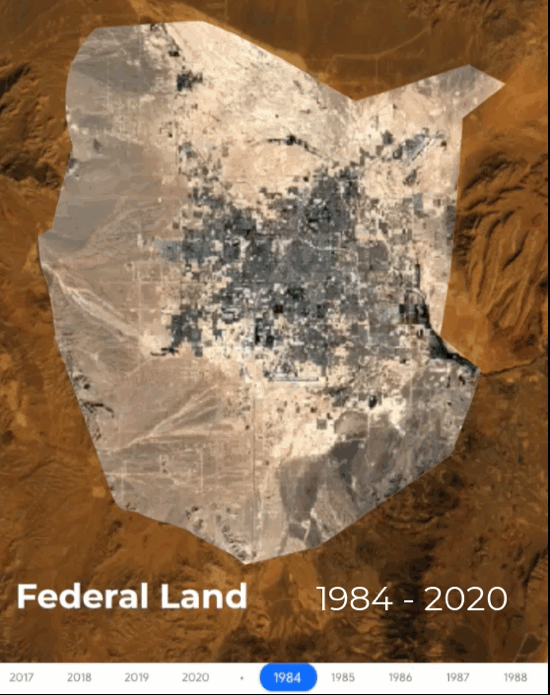July 2022 Market Report
- Invest Now or Wait for a Recession?
- Potential Investment Properties
- Market Trend
- About the Fernwood Real Estate Investment Group
- Schedule a discovery call with Eric Fernwood
Invest Now or Wait for a Recession?

Whether we will have a soft, hard, or no recession depends on which “expert” you listen to. Also, the “experts” provide national opinions, as if every location in the US is the same. Every location is different. Real estate is local. You need to understand the economies of each location and their susceptibility to economic turbulence. Also, some tenant pools are more prone to be laid off than others, even in the same location.
Whether to invest now or wait depends on your goals. If your goal is to buy inexpensive properties, then waiting is a good option. Prices are already falling in many locations, and more will follow.
If your goal is acquiring dependable passive income, I only advise waiting if you believe one of the two conditions is likely to occur.
- Interest rates will decrease significantly in the near future. I see this as unlikely since the inflation rate just increased (officially) to 9.1% (07/13/2022). Until inflation is under control, I see no likelihood that interest rates will fall significantly.
- Prices will drop significantly in the near future. In many locations, this is already occurring. But not in locations where pre-COVID demand drove up prices faster than the current inflation rate. Price and rent increases in such locations were driven by actual demand, not by pandemic effect or speculation. Such locations might slow down, but I do not expect a significant decrease in prices or rents due to ongoing demand. Las Vegas is one of the locations where prices continue to rise. I will cover the current Las Vegas condition and the probable future for investments below.
What is the downside of waiting?
- Lost appreciation - Appreciation is where you make the most money and how you grow your portfolio with the least capital. See this article in our April 2022 Market Report for specifics on how appreciation makes the most money and decreases your total capital requirements.
- Higher prices and higher interest rates - Due to the demand, prices will continue to increase and, until inflation is under control, so will interest rates. Waiting will cost you more money.
Invest In Real Estate That Performs Consistently
People come to us for dependable passive income streams they will not outlive and can pass to their children to have a better life. A dependable passive income must meet three criteria:
- Reliable - You continuously receive the income with minimal interruptions, in good and bad economic times.
- Inflation Adapting - Your rental income increases faster than inflation, so you have the additional dollars you need to maintain the same lifestyle.
- Persistent – The income continues for a long time; you and your spouse will not outlive the income.
I want to point out that all three criteria are long-term. Also, there will be good and bad economic times during the years you hold this property. So, the properties must continue to perform under adverse economic conditions.
How do we meet such requirements? By investing in the right location (Las Vegas) and targeting the right tenant pool.
While historical performance is not necessarily an indicator of future performance, it's our best indicator. So how did our clients’ properties perform during times of economic turbulence?
- 2008 market crash - The 2008 crash hit Las Vegas especially hard, and all property prices dropped more than 50%. However, our client's rental income did not decrease, and there were no vacancies. In terms of rental income, the 2008 market crash was a non-event. The market value of the properties plunged, but that was not an issue because they bought the properties for passive income.
- COVID - Of the +200 properties that we tracked, only a few tenants moved out (<10). data-preserve-html-node="true" They all continued to pay the rent until the property was re-rented, and they lost their security deposits. These properties were quickly re-rented at higher rates than the previous tenant was paying. COVID was a non-event in terms of our client's passive income. Also, the properties appreciated rapidly during this period. So, our clients benefitted in terms of increased rental income and appreciation.
- Eviction moratorium - The COVID eviction moratorium was not relevant to our tenant pool. We've had five evictions in the last 15 years. Our tenant pool stays employed, even in bad times, pays the rent, and stays for many years.
Market volatility doesn't have to mean investment uncertainty, as long as you choose a combination of the right location (Las Vegas) and targeting the right tenant pool. We have the software, expertise, and rigorous processes to take the uncertainty out of acquiring passive income. (If you’d like to learn more about our investment fundamentals, please check out our free training video.)
Las Vegas Performance
Rental Performance
Below is a chart showing $/SF since 2013 for all properties that conform to our property profile.

How fast rent increased depends on when the property was put into service. The table below shows relative rent increase ($/SF) and inflation-adjusted gain for various periods.
| Month | $/SF | Compound Rent Growth | Change Period | Period Annual Inflation | Annual Inflation-Adjusted Increase in Rent |
|---|---|---|---|---|---|
| 7/1/22 | 1.23 | ||||
| 7/1/21 | 1.11 | 12.0% | 07-01-2021 to 07-01-2022 | 7.9% | 4.1% |
| 7/1/20 | 0.96 | 13.5% | 07-01-2020 to 07-01-2022 | 6.3% | 7.2% |
| 7/1/19 | 0.94 | 9.7% | 07-01-2019 to 07-01-2022 | 4.3% | 5.4% |
| 7/1/18 | 0.87 | 9.0% | 07-01-2018 to 07-01-2022 | 3.7% | 5.3% |
| 7/1/13 | 0.71 | 5.8% | 07-01-2013 to 07-01-2022 | 2.5% | 3.3% |
From 2013 to the present, our client's rental income increased faster than inflation, so they have had increased buying power despite inflation. Our clients not only benefited from cash flow, they also benefited from:
- Appreciation
- Tax benefits
- Inflation protection
Market Value Performance
Since 2013, prices have steadily increased. Below is a chart showing the $/SF price from 2006 through July 2022.
- Blue line - The non-inflation-adjusted price. If you pretend inflation does not exist, you can say that houses are now selling for more than they were in 2006.
- Red line - The inflation-adjusted 2006 price. We are still $24/SF below the peak price.
- Green line - Peak 2006 price ignoring inflation.
Because we are still below peak 2006 prices, I believe that prices are not overheated and has a lot of headroom. See a more detailed chart of the $/SF below. $/SF continues to increase even though there is a small increase in inventory.
Is Las Vegas Going to Have Another 2008 Crash?
People occasionally ask about the odds of another 2008-type crash. In my opinion, the odds are near zero. The Las Vegas market today is entirely different than it was in 2008. See the table below for a comparison.
| 2008 | Today (07/13/2022) | |
|---|---|---|
| Properties Under Water | Almost all | Almost none |
| Inventory | +90 months | ~2 months |
| In foreclosure | Thousands | 16 |
| Bank-owned (REO) | Thousands | 24 |
| Short sales | Thousands | 16 |
In 2008, the only option for a homeowner in financial trouble was to short sell or foreclosure. Today, people who cannot afford their mortgage will sell their homes in days, deposit the profit, and rent. So, there is no need to short sale or go through foreclosure.
What Drives Las Vegas Housing Demand?
Scarcity is what determines the value of everything. During COVID, many cities experienced rent and price growth due to a one time black swan event. Prices are now falling in many of these cities. A recent article on Realtor.com listed cities that have fallen the most. Below are the top (bottom?) ten:
| City | YoY Price Change | Inflation Adjusted YoY Price Change at 8.6 |
|---|---|---|
| Toledo | -18.7% | -25.2% |
| Rochester | -17.0% | -23.6% |
| Detroit | -15.4% | -22.2% |
| Pittsburgh | -13.7% | -20.6% |
| Springfield | -5.8% | -13.3% |
| Tulsa | -5.0% | -12.6% |
| Los Angeles | -5.0% | -12.6% |
| Memphis | -4.6% | -12.2% |
| Chicago | -3.7% | -11.4% |
| Richmond | -3.4% | -11.1% |
What about Las Vegas?
The increasing demand for housing in Las Vegas is largely driven by population growth. I do not see any changes in the fundamentals that have been driving the housing demand in Las Vegas pre-pandemic, now, and in the foreseeable future:
- A good place to live - Some of the reasons people like living in Las Vegas include:
- Lower cost of living - Many people find that housing prices, rental rates, utilities, food, and more are more affordable than in the cities that they moved from. Also, there is no state income tax, so people get to keep more f the money they earn.
- Outdoor Activities - In an hour or less, you can head to the ski slopes, enjoy beautiful rock formations in places like Red Rock Canyon, or head to Lake Mead for a day of waterskiing. Plus, you can visit beautiful national and state parks in California, Utah, and Arizona in just a few hours. Even the Grand Canyon is only a few hours away.
- Always something to do - The Las Vegas Strip has world-class restaurants, shows, live music, gambling, major sports events, and more.
- Jobs - Over $24B in new construction (and more announced) will create thousands of new well-paying jobs. All these new jobs will bring thousands of people to Las Vegas who will need housing. No matter your trade or skill, there are multiple jobs looking for you.
- Business boom - No state income tax, low operating cost, low-cost energy, pro-business environment, and an available workforce make Las Vegas a desirable location for businesses. Businesses bring jobs that attract more people to Las Vegas.
- Population growth - The population continues to grow at a sustainable rate of about 2.5% to 3% annually.
- Low commercial energy cost - California: $0.21/KwH, Nevada: $0.09/KwH. Also, Las Vegas is one of the few cities in the US with dual electric power sources, critical for servers and electricity-dependent industries like data centers and Internet switching.
- Internet backbone - The fiber optic bundle connecting Southern California to the East Coast runs under Las Vegas Boulevard. This is one reason why Google is building a $1.2B data center here.
- California exodus - California seems to be doing all it can to drive people and businesses out of the state. The proximity to California, especially LA, ensures that Las Vegas will continue to gain population and businesses. People and businesses are also moving from other blue states.
- Land shortage - Las Vegas is a small island of privately held land surrounded by an ocean of federal land. At the end of 2019, the amount of vacant buildable land in the Las Vegas Valley was less than 28,000 acres, of which 5,000 to 7,000 acres are not viable for residential development. (87.5% of Clark County is federally owned. 85% of the entire state is federally owned.) The land consumption rate is about 5,000 acres/year. As developable land decreases, prices will continue to rise. See the time-lapse GIF below. The areas in brown are federal land. As you can see, very little land is left for new development. The lack of land and rising population almost guarantee that rents and prices will continue to rise.

Summary
The thesis of this paper is "Invest now or wait for a recession?" If your only goal is to own properties, then wait. Prices in most areas of the country will continue to fall, especially when you include inflation.
If your goal is dependable passive income, now is the time to act. While interest rates are higher than they've been for a few years, they are likely to continue increasing. Remember that the inflation and interest rates reached 18% in the early 1980s. It could happen again.
If you want to learn more about our processes that has delivered consistent performances, check out our training videos.
Thank you for your time. And, as aways, I welcome your feedback.
...Eric
Eric Fernwood
Eric@Fernwood.Team
702-358-8884
www.Fernwood.Team
Below is a link to this month's list of candidate investment properties. Our proprietary data mining software selected these candidate properties from thousands of available properties, and this is just the first step in our multi-step validation process, as shown below.
Note: Due to the rapid increase in interest rates, first-year returns are low. However, the return increases significantly even with a conservative 8% annual rent increase. The typical rent increase range is 8% to 12%. Contact me if you'd like detailed analysis for this subject.
Below are charts from our latest trailing 13 month market report, which includes June data. Remember that this data is only for the property profile that we target, not for the entire metro area. To see all the charts please click here.
|
Rental Statistics
|
Sales Statistics
|
|
Rentals - Median $/SF by Month
YoY rents grew an amazing 12% for June.

|
Sales - Median $/SF by Month
YoY prices increased by a whopping 32%!

|
|
Rentals - List to Contract Days by Month
Median time to rent is about 15 days for June.

|
Sales - List to Contract Days by Month
Median days on market is a little more than 11 days for June. Still a very hot market.

|
|
Rentals - Availability by Month
This chart shows the average daily number of properties that were for rent in a particular month. Pre-pandemic level was about 1000 (units).

|
Sales - Availability by Month
This chart shows the average daily number of properties that were for sale in a particular month.

|
|
Rentals - Months of Supply
About 0.7 month of supply for our target rental property profile. This is what is driving up the rents rapidly.

|
Sales - Months of Supply
Inventory is at 3 months for June, showing the effect of higher interest rates combined with seasonale uptick of inventory. This is at the pre-pandemic level for Las Vegas.

|
For the last 15+ years, we've helped clients build highly reliable, passive income streams through real estate that they will not outlive. Several are now retired and living entirely on their rental income. Most never invested in real estate before they started working with us, and the vast majority live in other states or countries. Below is a two-minute video of the services we provide.
© Cleo Li and Eric Fernwood, all rights reserved.








